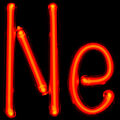Template:Selected anniversaries/December 3: Difference between revisions
Jump to navigation
Jump to search
No edit summary |
No edit summary |
||
| (2 intermediate revisions by the same user not shown) | |||
| Line 9: | Line 9: | ||
||1854: Battle of the Eureka Stockade: More than 20 gold miners at Ballarat, Victoria, are killed by state troopers in an uprising over mining licences. | ||1854: Battle of the Eureka Stockade: More than 20 gold miners at Ballarat, Victoria, are killed by state troopers in an uprising over mining licences. | ||
||1879: Donald Matheson Sutherland born ... physician and politician, 5th Canadian Minister of National Defence. Pic. | ||1879: Donald Matheson Sutherland born ... physician and politician, 5th Canadian Minister of National Defence. Pic. | ||
| Line 27: | Line 25: | ||
||1904: The Jovian moon Himalia is discovered by Charles Dillon Perrine at California's Lick Observatory. Pic. | ||1904: The Jovian moon Himalia is discovered by Charles Dillon Perrine at California's Lick Observatory. Pic. | ||
File:Neon_lighting_Ne_symbol.jpg|link=Neon lighting (nonfiction)|1910: First public demonstration of modern [[Neon lighting (nonfiction)|neon lighting]], by Georges Claude at the Paris Motor Show. | File:Neon_lighting_Ne_symbol.jpg|link=Neon lighting (nonfiction)|1910: First public demonstration of modern [[Neon lighting (nonfiction)|neon lighting]], by Georges Claude at the Paris Motor Show. | ||
File:John Backus.jpg|link=John Backus (nonfiction)|1924: Mathematician and computer scientist [[John Backus (nonfiction)|John Backus]] born. He will invent the Backus–Naur form (BNF) notation to define formal language syntax. | File:John Backus.jpg|link=John Backus (nonfiction)|1924: Mathematician and computer scientist [[John Backus (nonfiction)|John Backus]] born. He will invent the Backus–Naur form (BNF) notation to define formal language syntax. | ||
| Line 42: | Line 36: | ||
||1933: Paul J. Crutzen, Dutch chemist and engineer, Nobel Prize laureate (alive August 2018). Pic. | ||1933: Paul J. Crutzen, Dutch chemist and engineer, Nobel Prize laureate (alive August 2018). Pic. | ||
||1935: Patrick Carl Fischer born ... computer scientist, a noted researcher in computational complexity theory and database theory, and a target of the Unabomber. Pic: https://www.nytimes.com/2011/08/31/us/31fischer.html Pic search | ||1935: Patrick Carl Fischer born ... computer scientist, a noted researcher in computational complexity theory and database theory, and a target of the Unabomber. Pic: https://www.nytimes.com/2011/08/31/us/31fischer.html Pic search. | ||
||1938: Sally Shlaer born ... mathematician and engineer. Pic. | ||1938: Sally Shlaer born ... mathematician and engineer. Pic. | ||
| Line 49: | Line 43: | ||
||1956: Felix Bernstein dies ... mathematician known for proving the Schröder–Bernstein theorem central in set theory in 1896, and less well known for demonstrating the correct blood group inheritance pattern of multiple alleles at one locus in 1924 through statistical analysis. Pic. | ||1956: Felix Bernstein dies ... mathematician known for proving the Schröder–Bernstein theorem central in set theory in 1896, and less well known for demonstrating the correct blood group inheritance pattern of multiple alleles at one locus in 1924 through statistical analysis. Pic. | ||
||1973: Pioneer program: Pioneer 10 sends back the first close-up images of Jupiter. | ||1973: Pioneer program: Pioneer 10 sends back the first close-up images of Jupiter. | ||
| Line 62: | Line 54: | ||
||1984: Mathematician and theorist Vladimir Abramovich Rokhlin dies. Pic. | ||1984: Mathematician and theorist Vladimir Abramovich Rokhlin dies. Pic. | ||
||1993: Lewis Thomas dies ... physician, etymologist, and academic. Pic search | ||1993: Lewis Thomas dies ... physician, etymologist, and academic. Pic search. | ||
||1999: NASA loses radio contact with the Mars Polar Lander moments before the spacecraft enters the Martian atmosphere. | ||1999: NASA loses radio contact with the Mars Polar Lander moments before the spacecraft enters the Martian atmosphere. | ||
| Line 73: | Line 65: | ||
||2014: The Japanese space agency, JAXA, launches the space explorer Hayabusa 2 from the Tanegashima Space Center on a six-year round trip mission to an asteroid to collect rock samples ... an asteroid sample-return mission operated by the Japanese space agency, JAXA. It follows on from Hayabusa and addresses weak points identified in that mission. Hayabusa2 was launched on 3 December 2014 and arrived at near-Earth asteroid 162173 Ryugu in June 2018. It is intended to survey the asteroid for a year and a half, depart in December 2019, and return to Earth in December 2020. Hayabusa2 arrived at the target asteroid 162173 Ryugu (formerly designated 1999 JU3) on 27 June 2018. https://en.wikipedia.org/wiki/Hayabusa2 | ||2014: The Japanese space agency, JAXA, launches the space explorer Hayabusa 2 from the Tanegashima Space Center on a six-year round trip mission to an asteroid to collect rock samples ... an asteroid sample-return mission operated by the Japanese space agency, JAXA. It follows on from Hayabusa and addresses weak points identified in that mission. Hayabusa2 was launched on 3 December 2014 and arrived at near-Earth asteroid 162173 Ryugu in June 2018. It is intended to survey the asteroid for a year and a half, depart in December 2019, and return to Earth in December 2020. Hayabusa2 arrived at the target asteroid 162173 Ryugu (formerly designated 1999 JU3) on 27 June 2018. https://en.wikipedia.org/wiki/Hayabusa2 | ||
</gallery> | </gallery> | ||
Latest revision as of 17:58, 7 February 2022
1616: Mathematician and cryptographer John Wallis born. He will serve as chief cryptographer for Parliament and, later, the royal court.
1910: First public demonstration of modern neon lighting, by Georges Claude at the Paris Motor Show.
1924: Mathematician and computer scientist John Backus born. He will invent the Backus–Naur form (BNF) notation to define formal language syntax.
2001: The Genesis spacecraft exposes its collector arrays, beginning collection of solar wind particles. The collection process will end after 850 days, on April 1, 2004, with the spacecraft completing five halo loops around L1.



